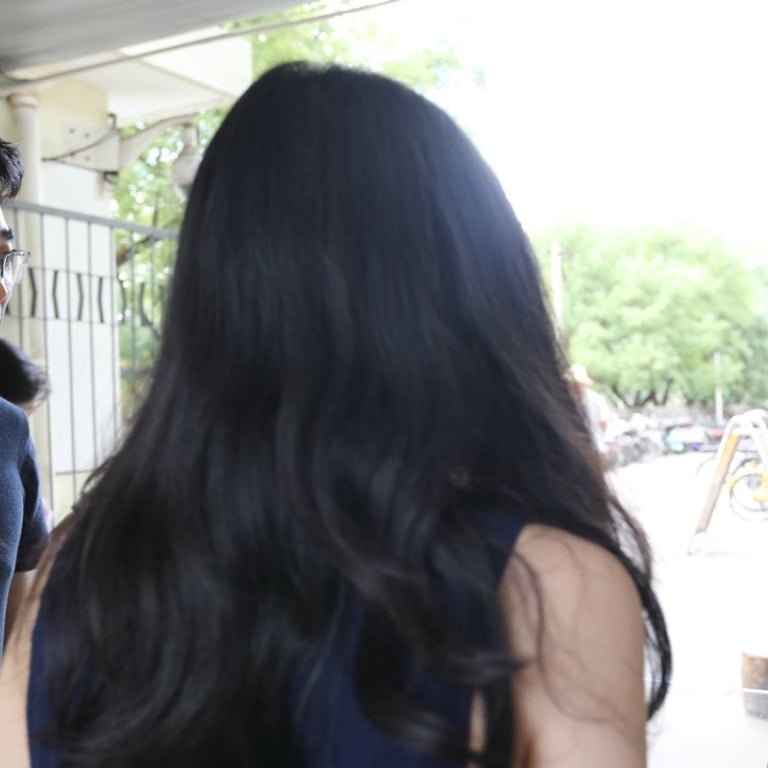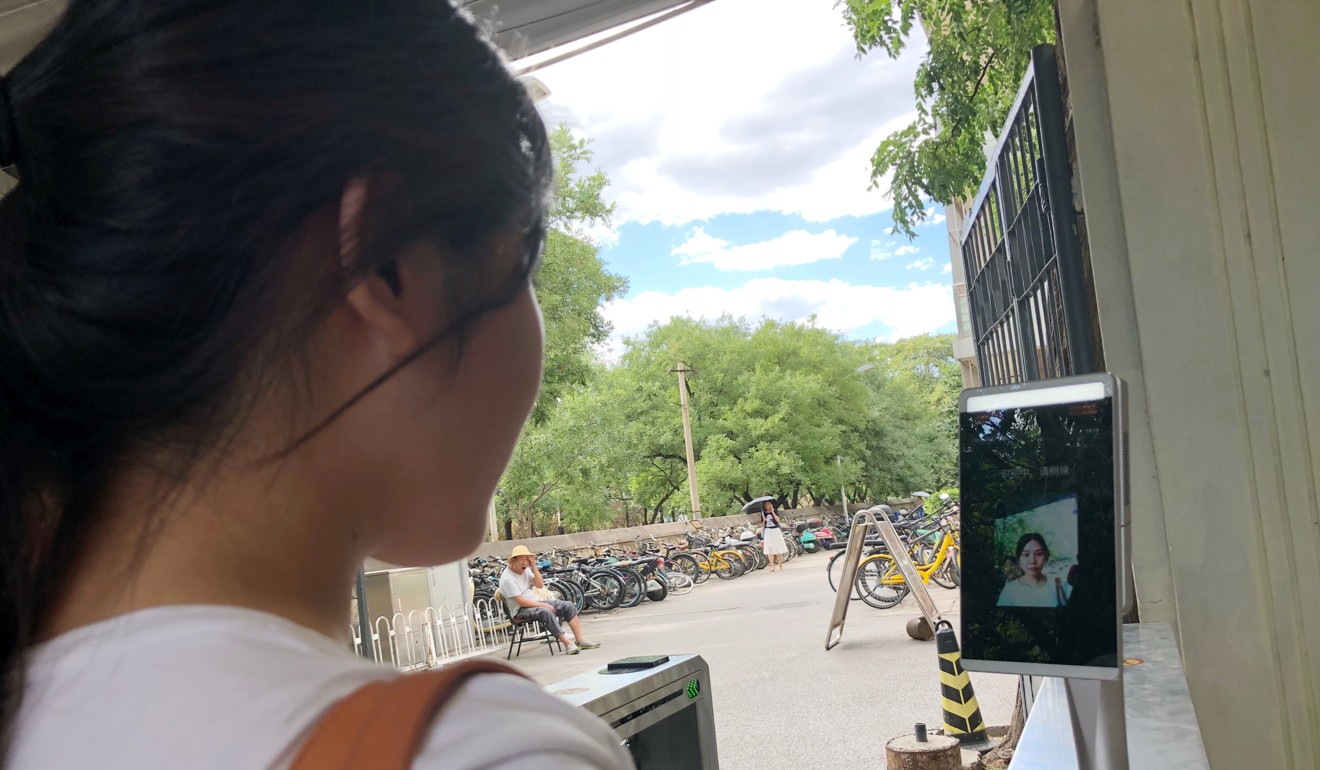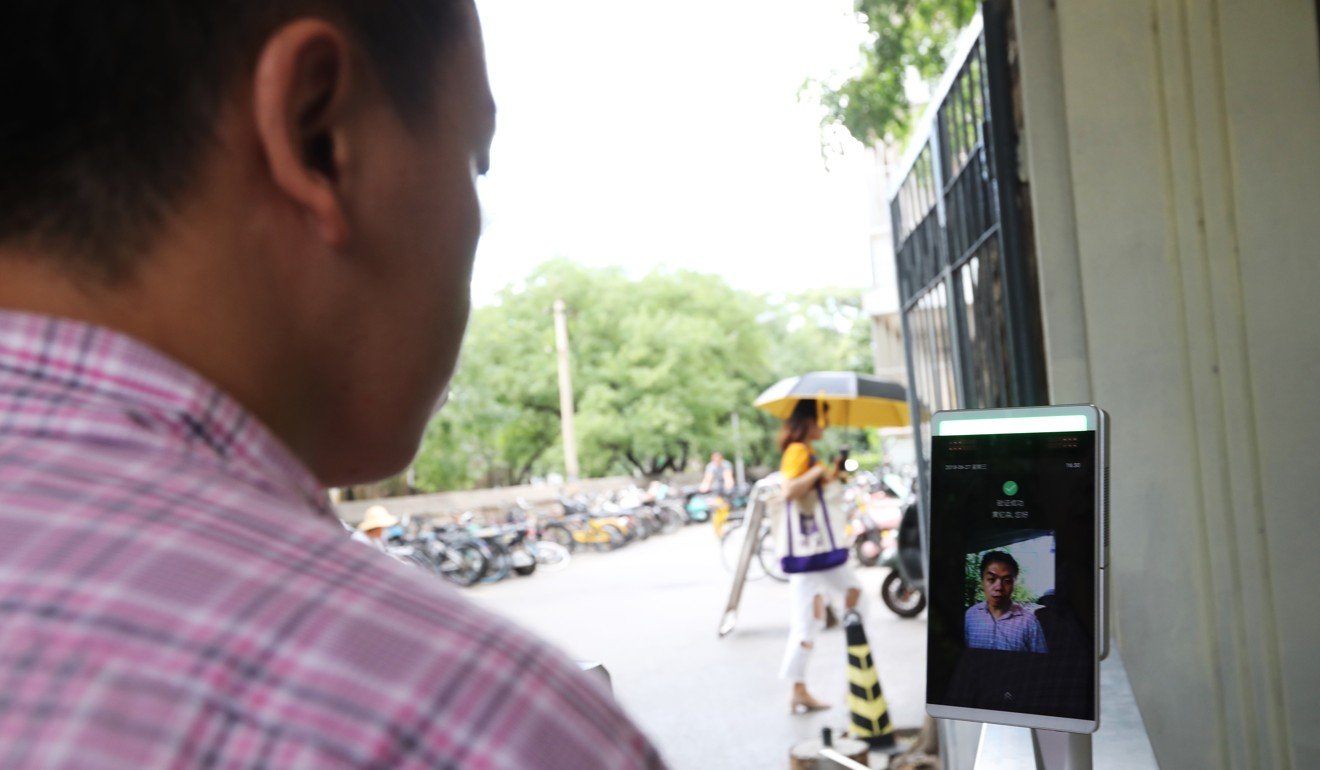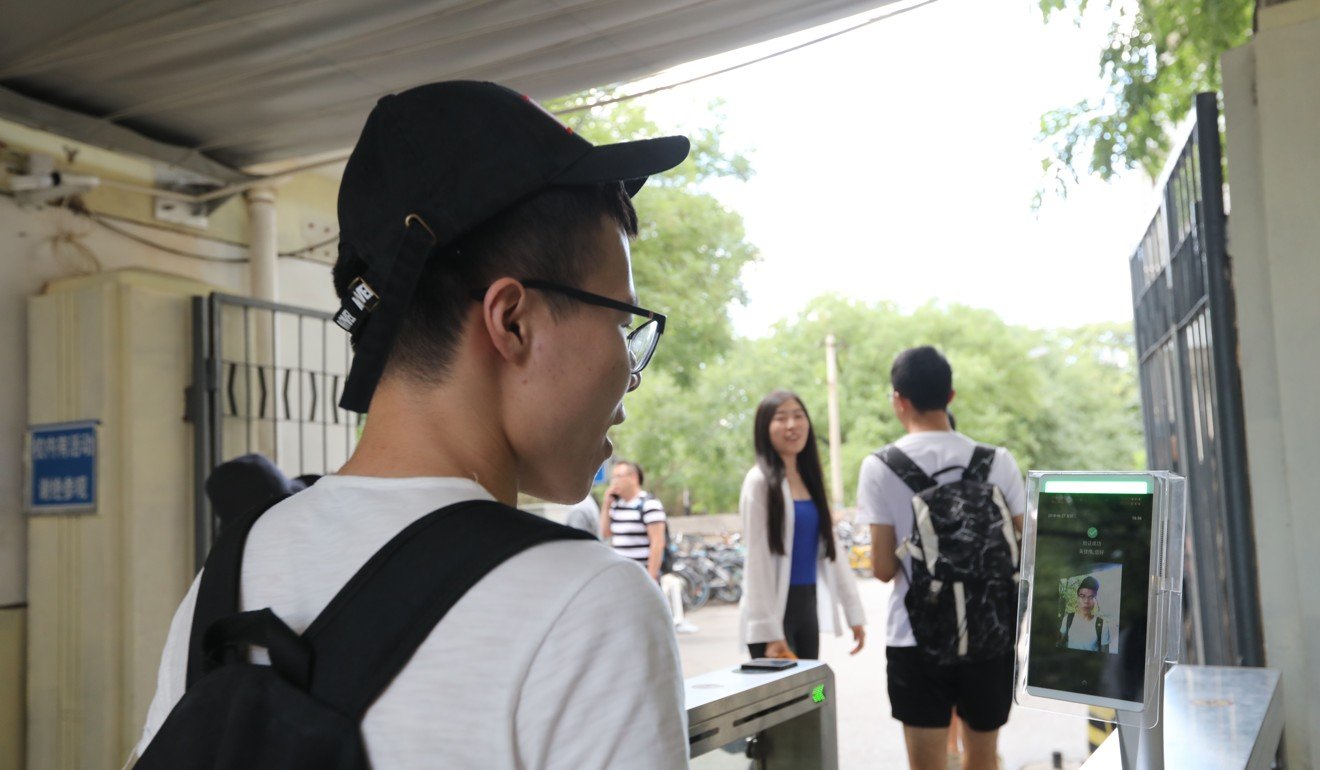
Peking University installs facial recognition system for students and staff on campus gate
Anyone entering from the southwest can have their face scanned by a camera instead of showing their ID card in latest use of the controversial technology
A top university in Beijing is using a facial recognition system to verify the identity of students and staff entering its campus, the latest application of the controversial technology in China.
Anyone going through the southwestern gate of prestigious Peking University can now have their face scanned by a camera instead of showing their ID card to security guards under a trial run of the system that started on Wednesday.
Many of the top universities in China restrict – and even ban – members of the public from visiting their campuses, and students and staff are often required to produce proof of identity before they can enter.

Pay attention at the back: school uses facial scans to monitor pupils
The technology is used in areas such as financial services, transport and retail as well as public security, where police use it to catch criminal suspects and even to name and shame jaywalkers.
But its use for state surveillance – including the tens of thousands of facial recognition cameras being used to track the Muslim Uygur minority in Xinjiang – has caused alarm and drawn strong criticism from human rights activists.
China’s hi-tech police state in fractious Xinjiang a boon for security firms
Peking University built its facial recognition system on the university ID photos of its students and staff, according to a post on its website.
Unlike the one-on-one recognition technology used for retail payments, the university system uses the same technology used by police to identify suspects, where the system searches through hundreds of thousands of photos in its database to match a scanned facial image, the post said.

When a photographer from the South China Morning Post visited the university gate on Wednesday afternoon, some students were apparently impressed by the hi-tech security.
“Wow, this is interesting,” one student said after he was cleared to go through.
Didi’s facial technology questioned after passenger death in China
Others, including a professor and a student who had forgotten to bring their ID cards, said they found the new system convenient.
But a number of students were not recognised by the system and were told to have their ID photos retaken in the guard room near the gate.
According to the post on the website, this problem is a result of the pixels of photos on the university IDs, which do not quite match what is required for the facial scans.
This Chinese city is policing the streets with facial recognition cameras
It also said that since the camera is installed outdoors, images could be overexposed during the day or underexposed at night.

It is not the university’s first use of the technology on campus – it has already installed about two dozen facial recognition devices outside some of its libraries, classrooms, student dormitories, gymnasiums and computer centres.
Revealed: the advanced surveillance ‘black tech’ within reach of China’s police
Other universities are also using facial recognition systems. Half an hour’s drive away, Beijing Normal University has installed facial recognition cameras outside its student dorms. Students must have their faces scanned and call out their names if they want to go into the building, The Beijing News reported earlier. In order to accommodate students with accents from across the country, the system can recognise 26 different Chinese dialects, the report said.
Facial recognition technology used to screen Chinese newlyweds
But other attempts to introduce the technology have been more controversial. A secondary school in eastern China caused a stir last month after it was reported to be using facial recognition cameras to scan pupils every 30 seconds to check if they were paying attention in class by analysing their expressions.

